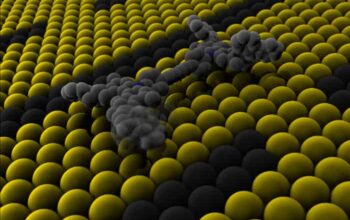The concept of an electromagnetic field (EM field) is pivotal in modern physics, influencing various domains such as electromagnetism, optics, and even quantum mechanics. The inquiry into whether an electromagnetic field could be classified as a form of matter opens up an interesting avenue of exploration. This discourse delves into the intricate properties of electromagnetic fields, their interactions with matter, and distinguishes them from the conventional understanding of matter itself. It is essential to dissect several aspects: the definitions of matter, the nature of electromagnetic fields, and their interrelation.
To elucidate the crux of this inquiry, it is instrumental first to articulate the definition of matter. In classical physics, matter is defined as anything that possesses mass and occupies space. This definition encompasses solid, liquid, and gaseous forms, as well as plasma, marking the quantitative attributes of matter. In contrast, electromagnetic fields, consisting of electric and magnetic components, permeate space and are characterized by the dynamics of charged particles but do not possess mass in the traditional sense. They propagate through space as waves, exemplified by the electromagnetic spectrum, which includes visible light, radio waves, and X-rays.
The electromagnetic field descries a continuum of phenomena governed by Maxwell’s equations, which articulate how electric fields (E) and magnetic fields (B) interact dynamically. These fundamental equations reveal that changes in electric fields induce magnetic fields and vice versa. Thus, these fields form a continuous field configuration rather than discrete entities classified as matter. The notion of field lines—visual and conceptual tools for understanding the orientation and strength of fields—further underlines the inherent non-material nature of electromagnetic fields.
Next, consider the relationship between matter and electromagnetic fields, which is underscored by the interactions between charged particles and these fields. When charged particles such as electrons or protons move through an electromagnetic field, they experience forces defined by Lorentz force law. This phenomenon illustrates the profound influence electromagnetic fields exert on particles of matter, facilitating various applications, from particle accelerators to everyday electronic devices. It is also evident in the way light interacts with matter, producing phenomena such as reflection, refraction, and absorption, driven by electromagnetic interactions.
Despite the non-material characterization of electromagnetic fields, one could argue that they embody energy, which can engender some parallels with matter. From the framework of Einstein’s mass-energy equivalence (E=mc^2), energy and mass are intrinsically convertible. While electromagnetic fields do not have mass by traditional definitions, they do harbor energy, as expressed by the energy density of electric and magnetic fields. In capacitors, for instance, the stored electromagnetic energy can manifest in dynamic reactions, hinting at an ephemeral ‘substance’ expressed through energy rather than mass.
Moreover, the quantum mechanical view introduces a noteworthy perspective. In the realm of quantum electrodynamics (QED), electromagnetic fields are quantized and represented by particles known as photons. Photons are massless bosons that convey electromagnetic interactions, acting as force carriers in the context of quantum field theory. This leads to potential ambiguities in the classification of electromagnetic fields. While photons are not matter by the conventional definition, they do embody quantifiable energy and momentum, further complicating the question of whether electromagnetic fields can be regarded as matter.
Furthermore, the duality of light as both a wave and a particle—and the subsequent implications on the nature of electromagnetic fields—underscores the challenges in categorizing these phenomena. This wave-particle duality contributes to the conceptualization of fields as fundamental aspects of the universe that interact with matter but do not conform to it. The seamless interactions between light and matter further implicate the non-material characterization of electromagnetic fields, revealing an intricate tapestry of relationships that defy simplistic categorization.
It is beneficial to reference practical applications to deepen the understanding of electromagnetic fields. The technology underpinning wireless communication, microwave ovens, and medical imaging like MRI all derive their functionality from our comprehension of electromagnetic phenomena. The interaction of external fields with matter yields efficacious responses that drive technological advancement. This symbiosis suggests a more nuanced interpretation of electromagnetic fields—they are neither matter in the traditional sense nor entirely separate from material phenomena. Instead, they represent a complex interplay of forces and energies that enable the material world as we perceive it.
In summary, the assertion that electromagnetic fields could classify as a type of matter is a multifaceted dilemma interfacing with classical and modern physics paradigms. While electromagnetic fields lack mass and do not occupy space in the conventional sense inherent to matter, they encapsulate energy and exhibit intricate dynamics with matter that intertwine them in subtle ways. The interplay of electromagnetic fields and matter challenges rigid boundaries between material and non-material entities, accentuating the intricacies inherent in physical laws. The exploration of this subject evokes profound inquiry, inviting ongoing dialogue and investigation into the profound nature of reality in which both matter and electromagnetic fields coexist, shaping our universe continuously.










